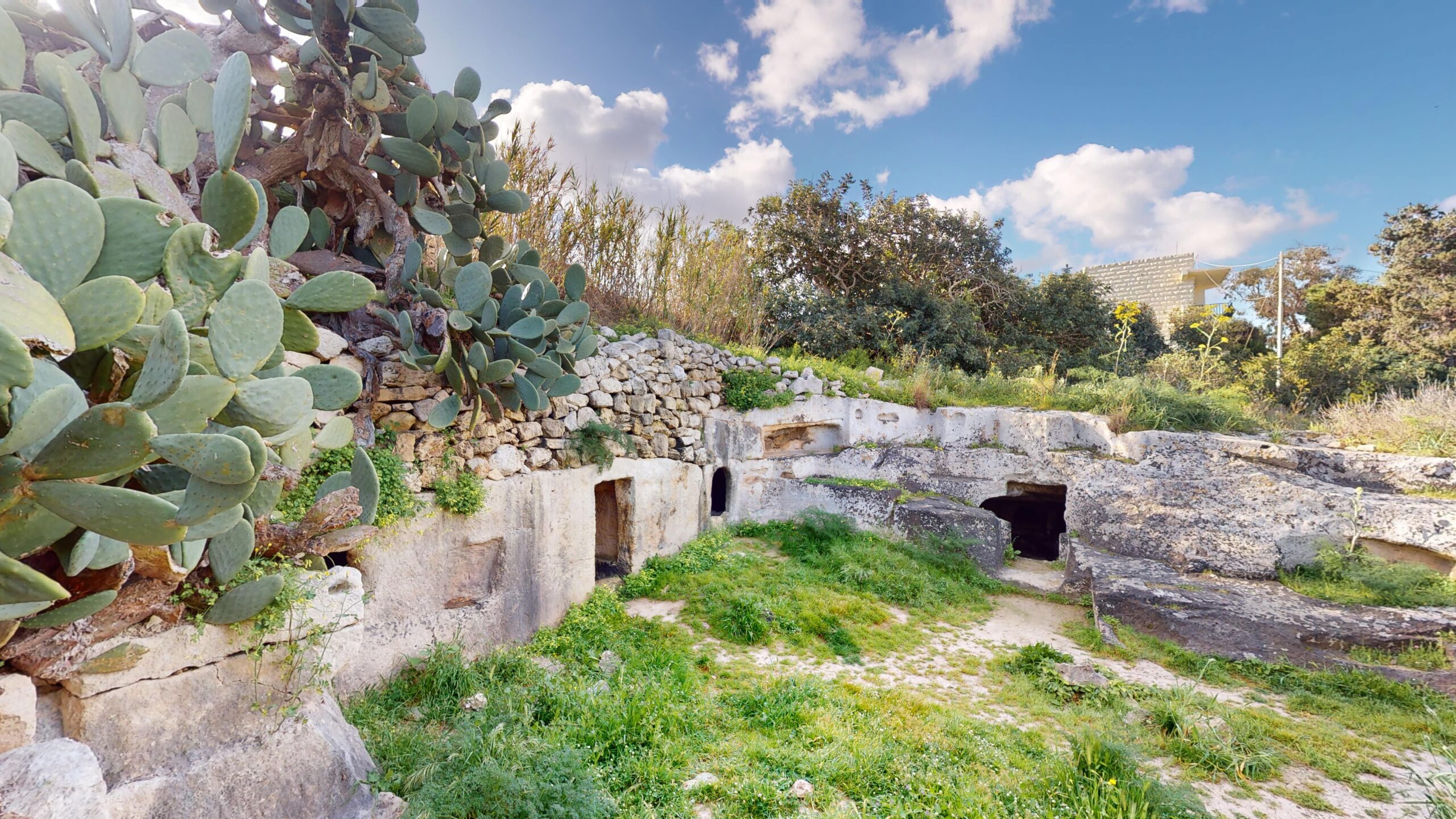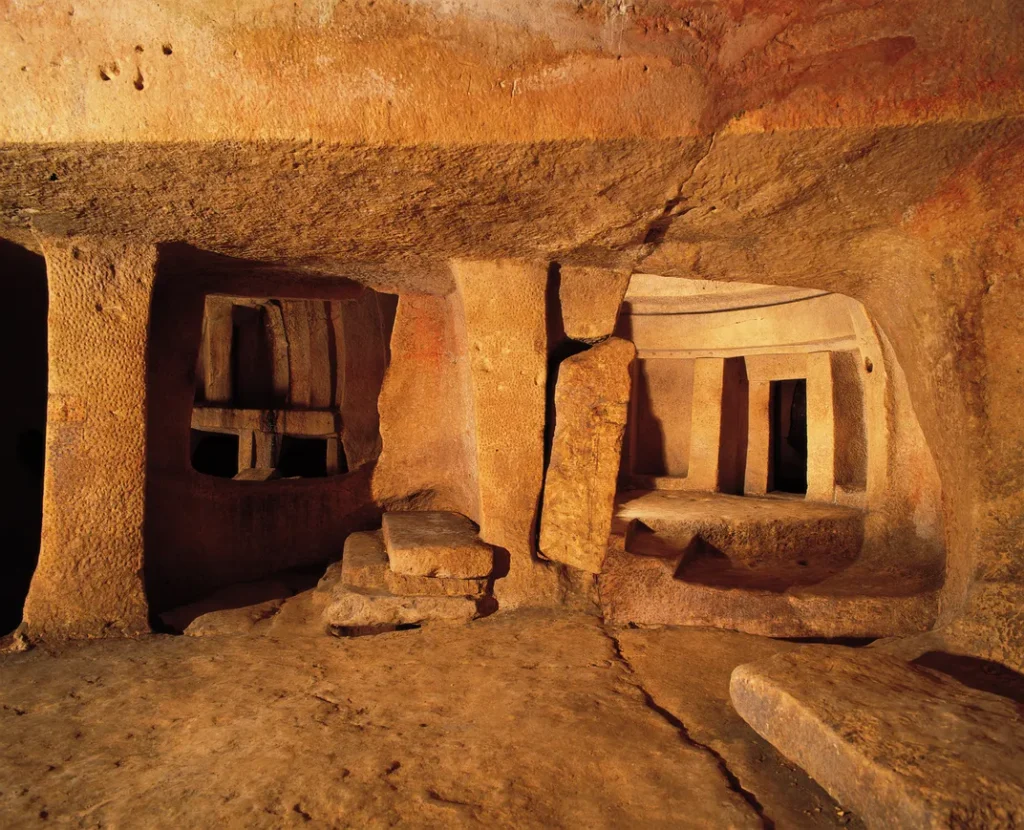
WELCOME!
to
Salini Catacombs
In-Naxxar

The Salini Catacombs, also known as the Naxxar Catacombs, are a significant archaeological site located in the town of Naxxar, Malta. These catacombs are one of several underground burial complexes on the island and hold historical and cultural importance.
 The catacombs in Naxxar date back to the Roman period, with some parts dating to the 3rd century AD. They were initially used as burial grounds and were later expanded during the Christian period when they served as a place for the burial of early Christians.
The catacombs in Naxxar date back to the Roman period, with some parts dating to the 3rd century AD. They were initially used as burial grounds and were later expanded during the Christian period when they served as a place for the burial of early Christians.
The catacombs consist of a network of underground tunnels, chambers, and tombs. They are carved out of the soft limestone rock that is prevalent in Malta. The layout includes various types of burial chambers, including loculi (niches for individual burials), arcosolia (arched burial niches), and larger family burial chambers. The complex also features Christian symbols and inscriptions on the walls, attesting to its Christian use.
underground tunnels, chambers, and tombs. They are carved out of the soft limestone rock that is prevalent in Malta. The layout includes various types of burial chambers, including loculi (niches for individual burials), arcosolia (arched burial niches), and larger family burial chambers. The complex also features Christian symbols and inscriptions on the walls, attesting to its Christian use.
Like many catacombs in Malta, the Naxxar Catacombs hold religious significance. They are believed to have been used for the burial of early Christians and may have served as a place of worship and veneration of saints and martyrs. Some of the frescoes and inscriptions found in the catacombs reflect early Christian religious motifs.
The Catacombs are open to the public and are a popular tourist attraction. Visitors can explore the underground complex and gain insights into Malta’s early Christian history and burial customs. Guided tours are often available to provide historical context and explanations of the site’s features. Like other catacombs in Malta, efforts have been made to conserve and protect the Salini Catacombs to ensure their historical and archaeological value is preserved for future generations.
The Catacombs of Malta

The catacombs of Malta are a remarkable testament to the island’s rich history and its diverse cultural influences over the centuries. Malta, strategically located in the Mediterranean, has been inhabited for thousands of years, and its catacombs provide a glimpse into this enduring past.
The most famous catacombs in Malta are located in the ancient city of Rabat, near the old capital of Mdina. The catacombs of St. Paul and St. Agatha are among the most visited. These underground burial chambers date back to the Roman period and were primarily used by early Christians. The catacombs feature intricate frescoes and elaborate tomb structures, reflecting the religious practices and beliefs of the time.
Another significant catacomb complex is found in the town of Mosta, known as the Ta’ Bistra Catacombs. These catacombs are unique for their complex layout and include various chambers, passageways, and tombs, some of which are still awaiting exploration by archaeologists.
In addition to Roman catacombs, Malta also has a set of Jewish catacombs. The Jewish Catacombs of Rabat are believed to have been used by the Jewish community in Malta during the Roman and Byzantine periods. These catacombs bear inscriptions and symbols that provide insights into the lives and traditions of Malta’s Jewish inhabitants.
The Catacombs of Hal Saflieni, also known as the Hypogeum, are another notable underground complex. This UNESCO World Heritage site is a subterranean necropolis that dates back over 4,000 years, making it one of the oldest underground burial sites in the world. It’s an incredible example of prehistoric engineering and architecture.
Malta’s catacombs offer a window into the island’s multicultural past, showcasing Roman, Christian, Jewish, and prehistoric influences. They serve as a reminder of Malta’s enduring history and the fascinating layers of civilizations that have shaped this small but culturally rich Mediterranean island. Today, these catacombs are not only archaeological wonders but also popular tourist destinations, attracting visitors from around the world eager to explore their ancient mysteries.